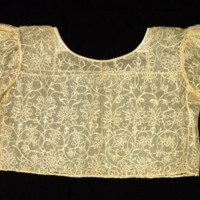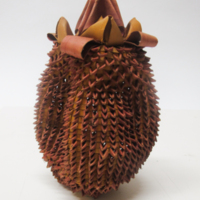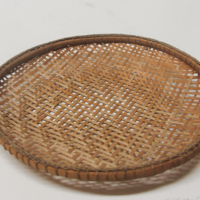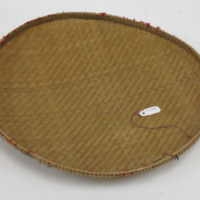Men's trousers (sawal), ca. 1960
Text
Across Southeast Asia the words for trousers vary only slightly, all deriving from the Persian shalwa or the Turkish shalvar, and therefore pointing to an Islamic source for the garment’s introduction to the region. While women in other parts of the Islamic world wear trousers under layers of clothing, only the men wear sawal in Southeast Asia.
Sawal generally have a straightforward silhouette that is typical of Middle Eastern tailoring: two tubes for legs are joined by a large gusset at the crotch. In the Mindanao example here, burnished abaca fiber from a wild banana plant provides a stiff and slick base for colorful embroidery characteristic of the area. The mostly geometric pattern includes an abstracted human figure that survives from the pre-Islamic symbolic repertoire.
A regionally significant motif, the figure blends into the overall design and references ancient tradition, while the trouser form itself shows the more recent influences of Islam in the community.
Annotation: "Sawal"(Information from the Exhibition "Sartorial Sanctuary" December 19, 2008 - April 26, 2009 https://risdmuseum.org/exhibitions-events/exhibitions/sartorial-sanctuary
by: Noel Jordan Racca
Share this



